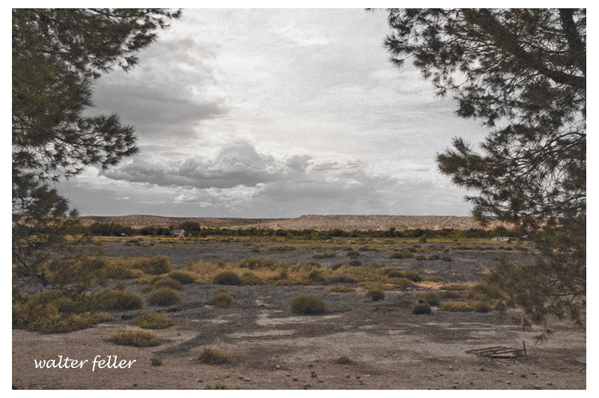Green Gold and Mint Juleps
The Move to Bryman was Well-timed

View toward Mojave River from site of Lane's home in Bryman
The timing of Lane's move was excellent on several counts. In the first instance, because of his early arrival he was able to claim some of the best land before word got out about the favorable farming conditions along the river. And the news did spread; in April 1867 it was reported that several parties had taken up land on the Mojave River, under the "swamp and overflowed land" act.
The report commented on the extensive farming along the river, stating that it would be good to have the land "settled up" with farms. By October of the same year, it was said that all the vacant land susceptible of tillage along the Mojave river had been taken up, although this was undoubtedly an exaggeration.
Secondly, alfalfa had just been introduced in the area and Lane elected to raise the experimental plant, a decision that would prove to be quite lucrative. Historian Luther A. Ingersoll credits San Bernardino County as being the site of the first successful culture of the plant in the United States.
The word alfalfa itself has been traced to the Arabic alfacfacah, meaning "the best feed." Europeans, however, call the plant lucerne, which means "light" or "shine." Alfalfa is believed to have originated in Asia and is one of the oldest grasses known to man, but it was not until the winter of 1852-53 that it was introduced in San Bernardino.
John Metcalf, a colonist from Australia, brought some seed with him and experimented with it at his homestead on Mt. Vernon Avenue. The crop did well, and its cultivation soon was implemented in Los Angeles and then in Utah, where it became a major industry in that state. Alfalfa also became an important crop on the Mojave River and remains so to this day. It is often called "green gold," and so it proved to be for Lane and many others.
Thirdly, Lane's commercial crops benefited greatly from a period of excellent rainfall during the years 1867 and 1868. At harvest time in 1867, it was announced that immense crops of hay, barley and corn had been produced on the Mojave. Doubters were invited to "apply to Capt. A. G. Lane," who had his yards "crammed with crops."
Lane had purchased a mower at the end of May 1867 and set it to work. There was plenty of demand for the machine out in his neighborhood, as this was the first one on the river. Four years earlier, the Assessor's Office listed only three such mowers in the entire county.
Lane had planted a variety of crops in anticipation of an increasing demand, and his location and timing were perfect to take advantage of the growing commercial opportunities, some of which came from the military. Following the Civil War and up until 1870, the main supply route for the military in Arizona was the Mojave Road. The traffic over this route was of such proportions as to virtually insure the well-being of those desert residents who provided supplies. Soldiers regularly traveled the road, often in contingents of over 100, or even 200, men.
One period in early 1867 is of particular note, when two companies from the 8th Cavalry and two from the 14th Infantry were sent from San Francisco to the District of Prescott in Arizona, as a result of Indian problems. On March 10, 1867, Colonel John Irvin Gregg arrived at Camp Cady with the two companies, and the regimental headquarters, of the 8th Cavalry. Already present at the outpost was one company of the 14th Infantry, plus the Cady garrison; altogether there were more than 400 men and officers present, and in excess of 500 mules and horses.
Later that year the newspaper commented on the trade this traffic was producing, stating, "Teaming on the Mojave Road is brisk now. Mr. Matthews, the contractor for Camp Cady, is giving a good deal of employment, and buying barley extensively."
< Previous - Next >
-=-